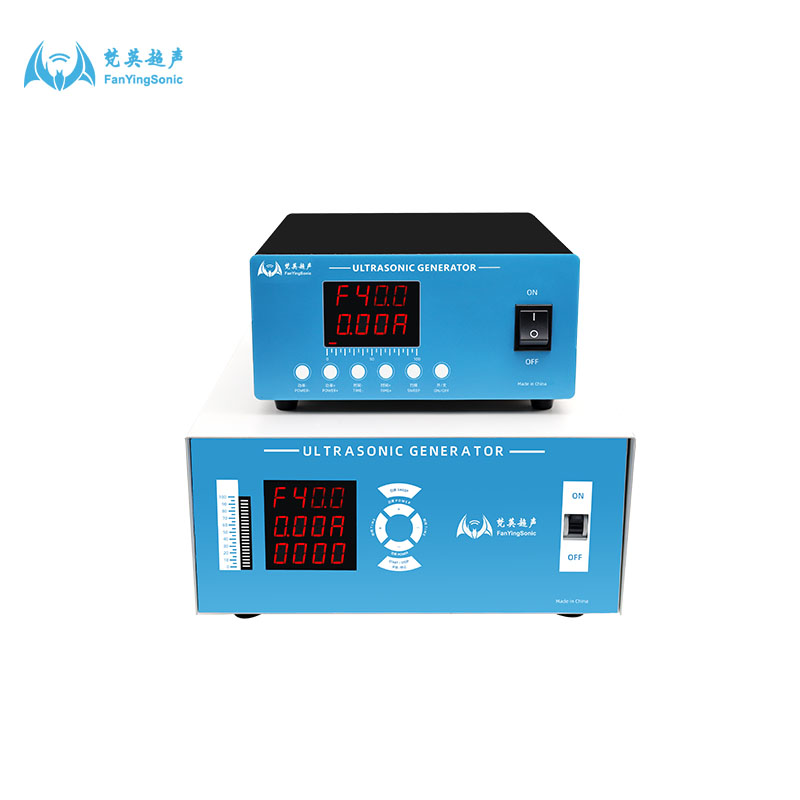Table type ultrasonic cleaning machine common application
Date: 2022-08-27Number: 492
Ultrasonic cleaners provide a time-saving and cost-effective alternative to manual scrubbing of parts that may miss difficult-to-clean areas. Ultrasonic cleaning is especially suitable for cleaning complex items, including blind holes, cracks and grooves.
Table-top ultrasonic cleaning machine with a strong stainless steel structure, can provide life-long after-sales service. Auto-tuning can adjust the main ultrasonic frequency of 38khz according to the change of load and liquid level. All tanks include a built-in drain with a valve, a built-in fan for cooling electronics, and a filter to correct electromagnetic interference. Modular circuit boards can be quickly serviced when needed. Timers allow the user to control the timing of the application of ultrasonic energy, while optional heaters include a thermostat to control the temperature of the liquid for better cleaning performance.
Automatic frequency-tracing ultrasonic generator
Not all ultrasonic cleaning machines are the same. The piezoelectric ultrasonic transducer attenuates or attenuates with time. This gradual degradation of the ultrasonic cleaning transducer will affect the consistency of the cleaning results. This problem can cause users to replace the ultrasound canisters every 2-5 years, which can be an expensive ongoing cost.
Fortunately, the desktop ultrasonic cleaner offers a feature that reduces piezoelectric attenuation: an automatic frequency-tracking ultrasonic generator. The ultrasonic generator has a circuit for monitoring the piezoelectric attenuation and adjusting the ultrasonic power output accordingly. This more than doubles the life expectancy of ultrasound. In addition, the self-tuning circuit monitors and adjusts the load level and liquid level in the tank, so that the ultrasonic cleaning effect of each batch is consistent.
Use ultrasonic cleaning for best results
Optional heaters in the table-top ultrasonic tank help loosen dirt and chemical bonds more quickly, thus reducing cleaning time. In general, higher heat will reduce cleaning time, but higher heat can also cause damage to softer metals (such as aluminum) or precision electronics.
Another risk associated with high temperatures is evaporation or chemical decomposition of the clean solution. Some cleaning processes, such as removing charred carbon, require temperatures as high as 180 ° F, but most industrial applications work best in the 135-150 ° F range.
In addition to temperature, the chemical composition of the cleaning solution also plays an important role in effective cleaning. Generally speaking, the stronger the alkalinity of the cleaning solution, the better the effect. But higher pH can also damage softer metals (such as aluminum) or precision electronics (such as copper wire) . For rust-prone metals, appropriate in the water-based solution to add rust inhibitor.

Ultrasonic parts cleaning system
The table-top ultrasonic parts cleaning trough can be combined with the ultrasonic washing trough and the hot air drying trough to form a complete cleaning system to ensure the cleaning quality and efficient operation.
Ultrasonic rinsing
Flushing after ultrasonic parts cleaning is a process step that is often underestimated. Since the parts are only as clean as the final flush, it is important to perform this step correctly.
When the operator removes the part from the ultrasonic cleaning tank, the dirty solution contains suspended debris, which is deposited back on the cleaned part.
The dirty solution that is brought into the flushing tank is called a drain. Manual flushing is time-consuming and prone to human error. This is why ultrasonic rinsing is an effective method for precision cleaning of blind holes, precision parts, or complex details in applications.
The ultrasonic flush tank combines the Sonication with the flowing water. Ultrasonic waves carry the chemicals out to the surface of the rinsing tank. Water flows in from the bottom of the flushing tank and pushes chemicals into the overflow weir, which is drained through a riser. This surface skimming will wash away any remaining traces of cleaning solution or debris.
Table-top ultrasonic cleaning machine is durable.
Before starting the ultrasonic generator, make sure that the liquid covers all the items to be cleaned in the ultrasonic trough. Do not operate ultrasound without a liquid in the tank, as this can quickly cause the transducer to overheat beyond repair.
Avoid placing objects directly on the bottom of the ultrasonic cleaning tank as this will prevent cavitation of parts that do not come into contact with the cleaning fluid. Instead, place the part in a wire mesh basket or similar container so that the entire surface of the part comes into contact with the cleaning solution.
Do not place the ultrasonic cleaning device on towels, paper or loose fabric. These materials can cause clogging because the desktop ultrasonic cleaner draws air from the bottom of the device for cooling the fan. Clogged cooling fans can cause electronics to overheat.
Security issues
Do not use flammable liquids. Tabletop ultrasonic cleaners are not suitable for flammable liquids such as isopropanol or acetone, whether or not they contain optional heaters. Even without the heater, the ultrasonic generator raises the temperature of the solution.
Correct electrical grounding. Do not operate a desktop ultrasonic cleaning machine without proper electrical grounding.
Do not put your hand into the solution when cleaning. Doing so can cause burns due to temperature, as well as discomfort and skin irritation. A better way to test the ultrasonic energy uniformity throughout the tank is to suspend a piece of aluminum foil in a fluid and observe the cavitation pinholes in the foil at different depths.
Common applications
The dental and jewelry industries
The U body and manifold interior are small and can not be cleaned by forced injection or mechanical disassembly
medical equipment stainless steel ultrasonic cleaning
Aerospace, parts cleaning
water-soluble processing coolant, chip, particle and genuine processing/cutting oil, polishing, polishing and grinding compounds for ultrasonic parts cleaning
for ultrasonic parts cleaning in machine center
General cleaning for maintenance, manufacturing, rework and/or remanufacturing.